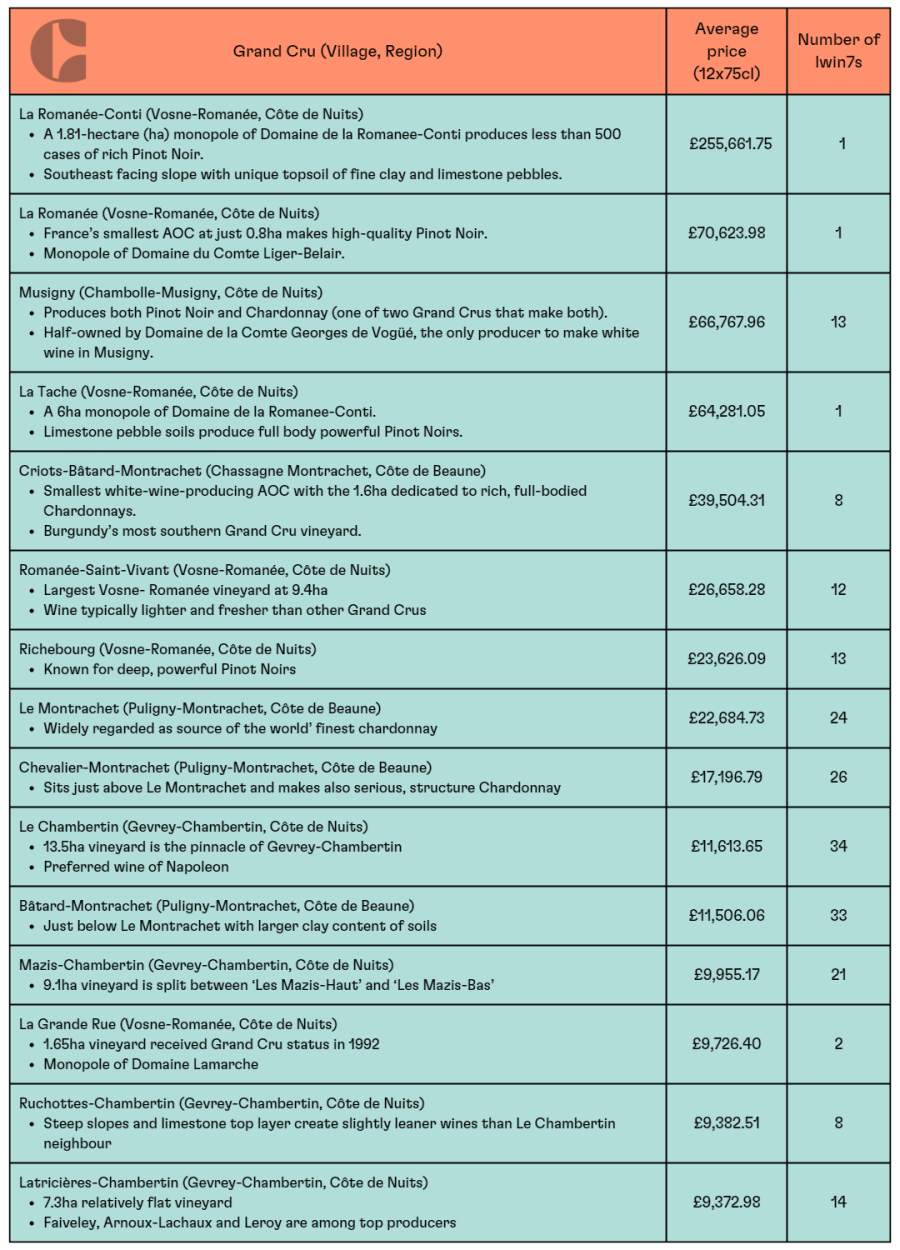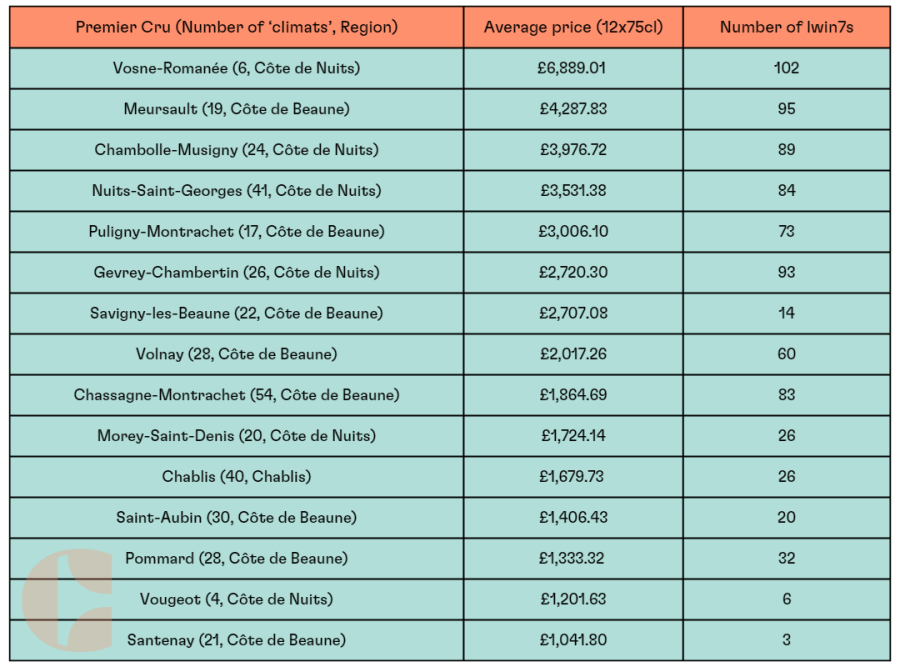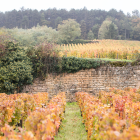
A Guide to Burgundy’s Classification System
How the system works
On the face of it, the classification system of wines from Burgundy can seem confusing, especially in contrast to the likes of Bordeaux, where estates are simply classified on a good-better-best system. It’s true, there are a number of facets to consider, but it’s not necessarily as complicated as it first seems.
In terms of geography, Burgundy can be broken down into five primary wine-growing areas:
While Bordeaux’s 1855 classification (and subsequent equivalents) considers the producer of the wine, in Burgundy – with a strong focus on terroir – it is the vineyards that are classified, and there are four ascending grades:
 Regional
Regional
Wines that can be made from grapes grown anywhere from one of Burgundy’s regions
Example: Domaine Leflaive Bourgogne Blanc
 Village
Village
Wines named for the towns near where their grapes are sourced
Example: Sylvain Cathiard Vosne-Romanée
 Premier cru
Premier cru
Wines from single vineyard areas within a village, called ‘climats’ or occasionally wines can be a blend of Premier Cru climats from a single village
Example: Alain Hudelot-Noellat Vosne-Romanée ‘Les Suchots’ Premier Cru
 Grand cru
Grand cru
Elite vineyards that boast exceptional quality and prestige
Example: Domaine Leroy Romanée-Saint-Vivant Grand Cru
Of the 100+ classified regions in Burgundy, just 1% are Grand Crus, 10% are Premier Crus, 37% are village wines and 52% are regional wines. Village wines come from a village or commune of Burgundy – there are 44, including Chablis and Nuits-St-Georges. Regional wines, meanwhile, come from overarching Bourgogne appellations and will be labelled ‘Bourgogne Rouge’ or ‘Bourgogne Blanc’.
Now things can get a little more complicated. In Burgundy, a single climat may have multiple owners. Le Chambertin, for example (a Grand Cru), is divided between Domaine Armand Rousseau, Domaine Leroy, Domaine Jean-Louis Trapet among others. In a very small number of cases, however, a whole vineyard will be owned by one producer – La Tache, for example, is wholly owned by Domaine de la Romanée-Conti. This is called a monopole.
As such, identifying a wine in Burgundy requires two pieces of information: the name of the vineyard and the name of the owner, such as Le Chambertin Domaine Armand Rousseau. This is vital, because there can be a big difference in quality and style between the producers of each of these vineyards – not all Chambertins are created equal. For this reason, it pays to know a little something about Burgundy’s producers.
To make matters slightly more complicated, there exists a tradition in the region whereby villages may add the name of their best vineyard to the end of their overall name – Chambolle added Le Musigny to become Chambolle Musigny, for example. Le Montrachet straddles two communes, Puligny and Chassagne, hence Puligny-Montrachet and Chassagne-Montrachet.
What drives prices for top Grand Crus and Premier Crus
The Côte de Nuits and Côte de Beaune contain most of the prestigious Burgundy’s crus. As the top of the pyramid, it is no surprise that Grand Crus come with higher average prices than Premier Crus. The differences between each vineyard cru is not an exact science but typically comes down to a combination of:
- Quality of each cru – Burgundy is all about its terroir, and the specific location and soils of certain vineyards are regarded as producing the best wines. This drives up demand and, subsequently, prices.
- Scarcity of total production – The other side of the supply-demand relationship; if a vineyard only makes a small quantity of wine (whether from many or just a few producers), its price tends to rise if demand is strong.
- Status and number of producers – Since vineyards are often shared among different producers, the number and the brand status of the producers making wines from specific vineyard impact the prices. Individual crus with a small number of producers can drive up prices, especially if the producers are among the top tiers of the market. For example, La Romanée-Conti is a monopole of one of the biggest names in all of fine wine, Domaine Romanée-Conti, which results in substantially higher price tags.
Top Grand Crus and Premier Crus by Average Price

Source: Wine-Searcher as of 31 Dec 2022.

Source: Wine-Searcher as of 31 Dec 2022.
Chablis: Burgundy’s northern region
If you’re a Chablis fan, however, Burgundy’s classification rules don’t apply here. This area – known for its zesty Chardonnays – has its own ranking structure.
- Petit Chablis – These wines are produced from grapes grown around the Chablis village. They’re usually high in acidity and full of citrus character.
- Chablis – Grapes for these wines are sourced from the limestone slopes near the village of Chablis. The wines are often rounder and more minerally.
- Premier Cru Chablis – These wines come from the Chablis vineyards boasting Kimmeridgian limestone marl, which gives them a very nuanced, elegant character.
- Grand Cru Chablis – Grapes for these wines come from vineyards situated to the north of the village, and comprise seven climats: Blanchot, Bougros, Les Clos, Grenouilles, Presuses, Valmur, and Vaudesir. These wines taste unique in that – unlike those from the rest of Chablis – many are aged in oak.





